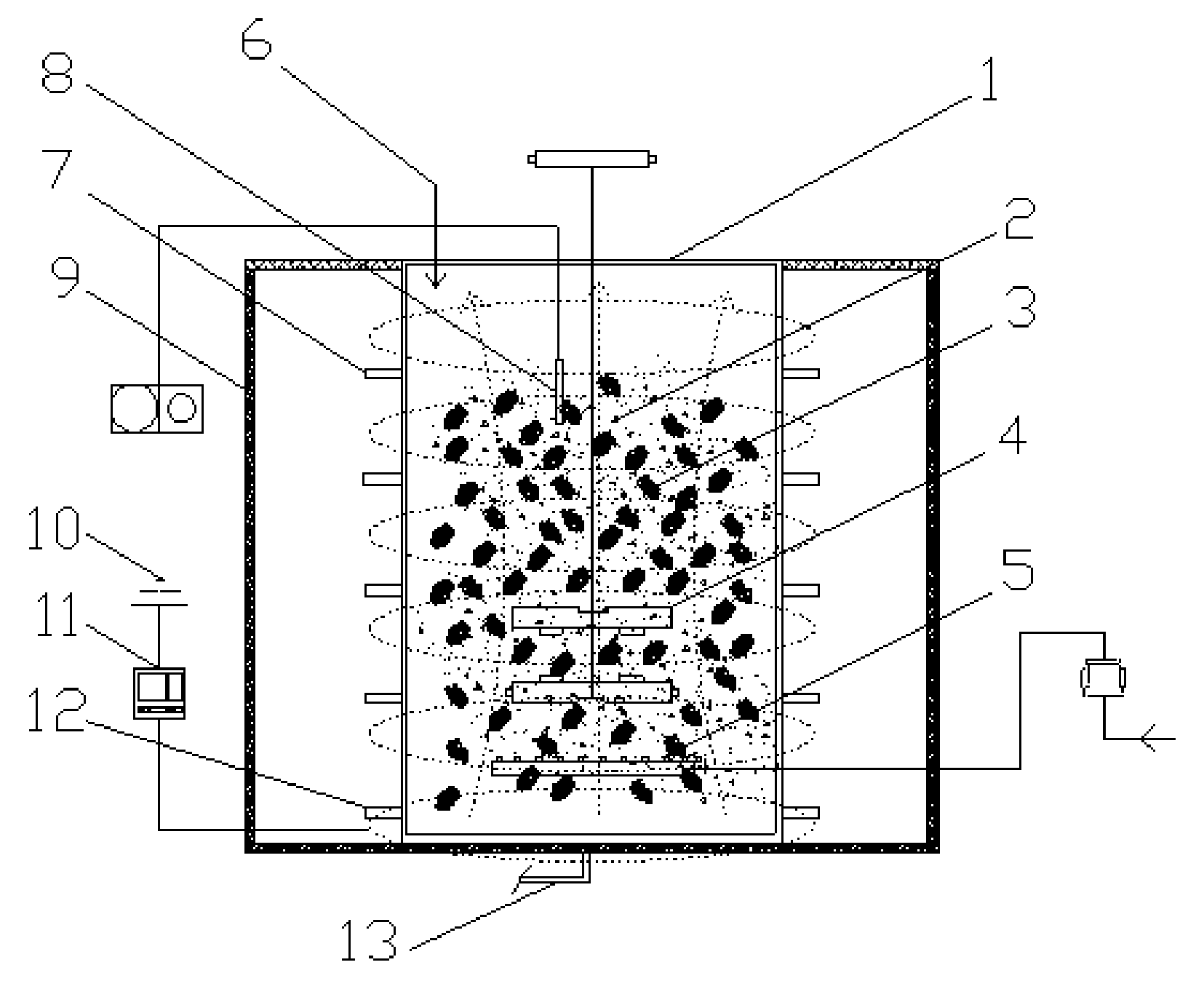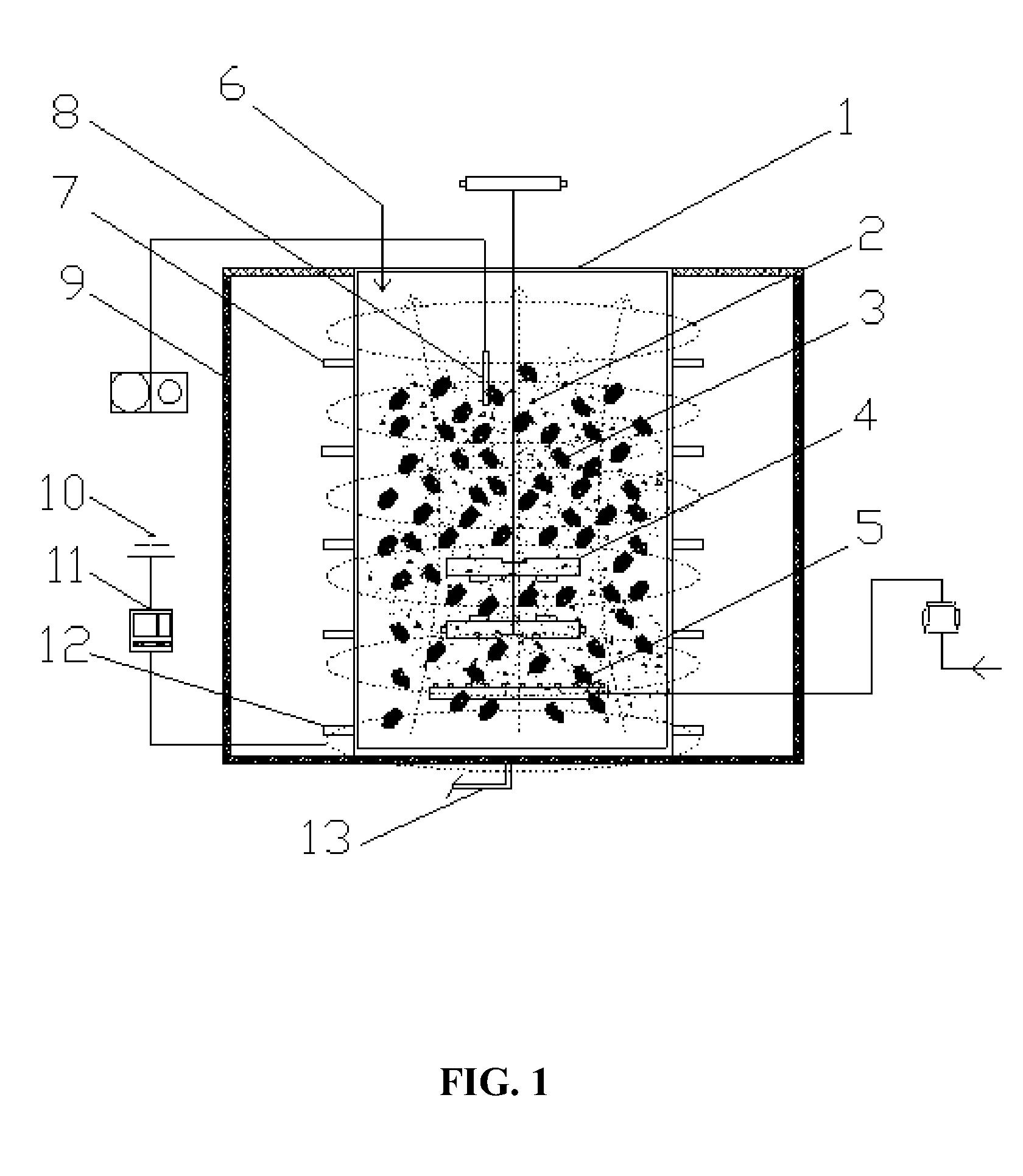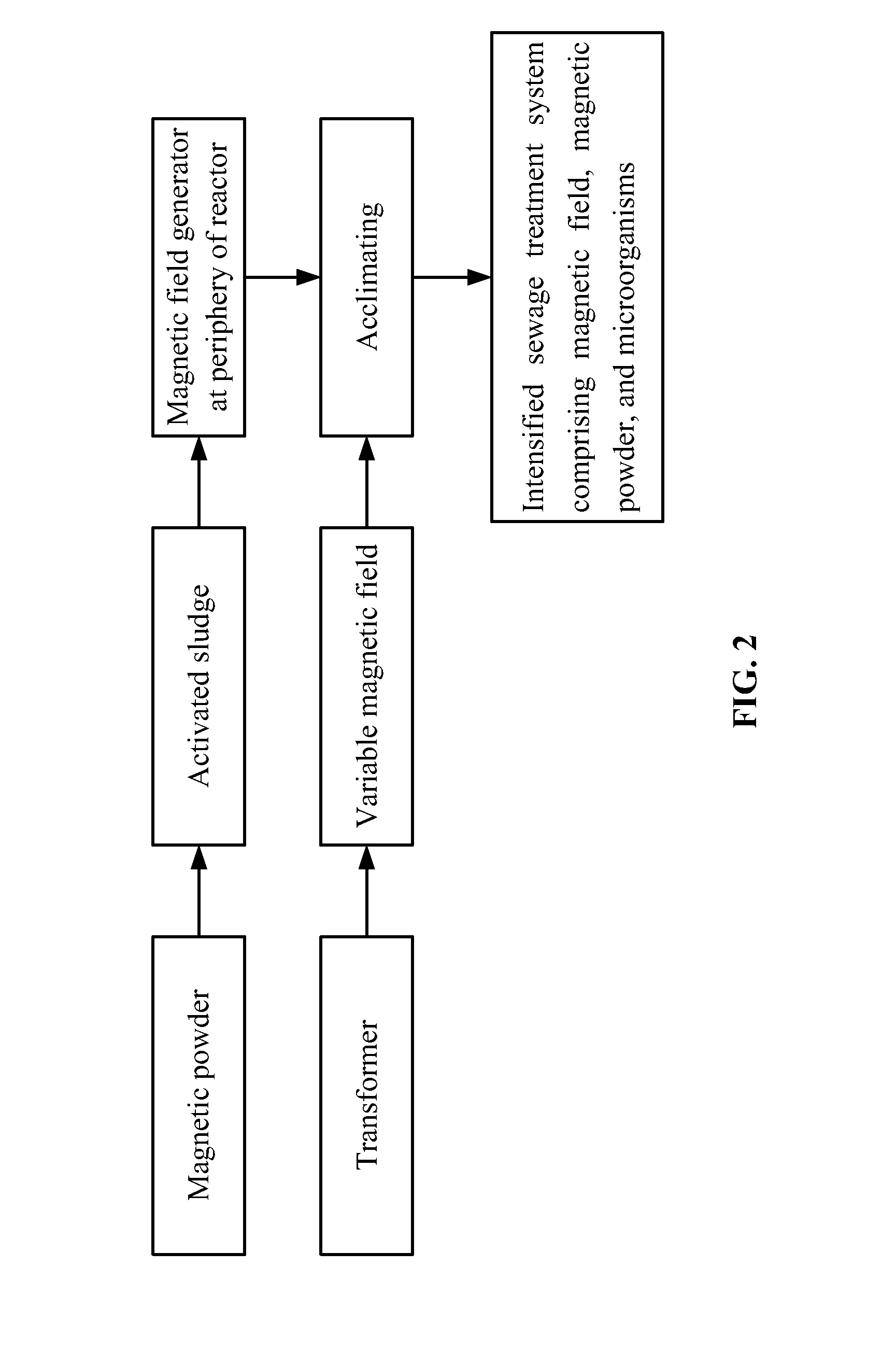Device and method for sewage treatment using variable magnetic field
a magnetic field and sewage treatment technology, applied in biological water/sewage treatment, sustainable biological treatment, separation processes, etc., can solve the problems of low biological treatment efficiency, further affecting the efficiency of sewage treatment, and conventional methods for food industry wastewater treatment cannot meet the requirements, etc., to achieve low reaction efficiency, discharging disqualified effluent, and inability to run smoothly
- Summary
- Abstract
- Description
- Claims
- Application Information
AI Technical Summary
Benefits of technology
Problems solved by technology
Method used
Image
Examples
example 1
[0030]As shown in FIG. 1, a sewage treatment device built in a sewage treatment plant comprises a magnetic powder intensified activated sludge (MPIAS) reactor 1. The MPIAS reactor comprises a stirrer 4, an aeration device 5, magnetic powder 2, activated sludge 3, a water inlet 6, a water outlet 7, and a sludge outlet 13. The water inlet 6 is disposed at the upper end of the reactor 1, the water outlet 7 is disposed on the side wall and the sludge outlet 13 is disposed at the lower end. The reactor 1 is provided with the stirrer 4 and the aeration device 5. The reactor 1 is filled with magnetic powder 2 and activated sludge 3. The magnetic powder 2 is prepared by selecting natural magnetite Fe3O4 as a magnetic seed, finely grinding the magnetic seed to have a particle size of 8-10 microns, and purifying to have a purity of 99.5% using a weak magnetic separator.
[0031]The periphery of the reactor 1 is provided with a magnetic field generator. The magnetic field generator comprises a ma...
example 2
[0038]The wastewater treatment device is the same as that in example 1 except that the thickness of the iron cover 9 is 8 mm.
[0039]As shown in FIG. 2, based on the above device for sewage treatment, a method for sewage treatment is described as follows:[0040]a) disposing the magnetic field generator at the periphery of the reactor 1 and placing the reactor 1 into the spiral coil 12 of the magnetic field generator, and allowing the power supply 10 to be an off-state;[0041]b) placing the activated sludge 3 having a concentration of 5000 mg / L and the magnetic powder 2 in the reactor 1 at 15° C., the addition amount of the magnetic powder 2 being 1.2 g / L, introducing simulated food industry wastewater having an organic load of 0.05 kg / (m3·d) into the reactor, and aerating and stirring (300 rpm) the reactor to yield a flocculent mixture of the activated sludge 3 and the magnetic powder 2;[0042]c) culturing the flocculent mixture of the activated sludge 3 and the magnetic powder 2 for 20 ...
example 3
[0045]The wastewater treatment device is the same as that in example 1 except that the thickness of the iron cover 9 is 7 mm.
[0046]As shown in FIG. 2, based on the above device for sewage treatment, a method for sewage treatment is described as follows:[0047]a) disposing the magnetic field generator at the periphery of the reactor 1 and placing the reactor 1 into the spiral coil 12 of the magnetic field generator, and allowing the power supply 10 to be an off-state;[0048]b) placing the activated sludge 3 having a concentration of 4500 mg / L and the magnetic powder 2 in the reactor 1 at a temperature of 10° C., the addition amount of the magnetic powder 2 being 1.0 g / L, introducing simulated food industry wastewater having an organic load of 0.05 kg / (m3·d) into the reactor, and aerating and stirring (250 rpm) the reactor to yield a flocculent mixture of the activated sludge 3 and the magnetic powder 2;[0049]c) culturing the flocculent mixture of the activated sludge 3 and the magnetic...
PUM
| Property | Measurement | Unit |
|---|---|---|
| temperature | aaaaa | aaaaa |
| temperature | aaaaa | aaaaa |
| particle size | aaaaa | aaaaa |
Abstract
Description
Claims
Application Information
 Login to View More
Login to View More - R&D
- Intellectual Property
- Life Sciences
- Materials
- Tech Scout
- Unparalleled Data Quality
- Higher Quality Content
- 60% Fewer Hallucinations
Browse by: Latest US Patents, China's latest patents, Technical Efficacy Thesaurus, Application Domain, Technology Topic, Popular Technical Reports.
© 2025 PatSnap. All rights reserved.Legal|Privacy policy|Modern Slavery Act Transparency Statement|Sitemap|About US| Contact US: help@patsnap.com



